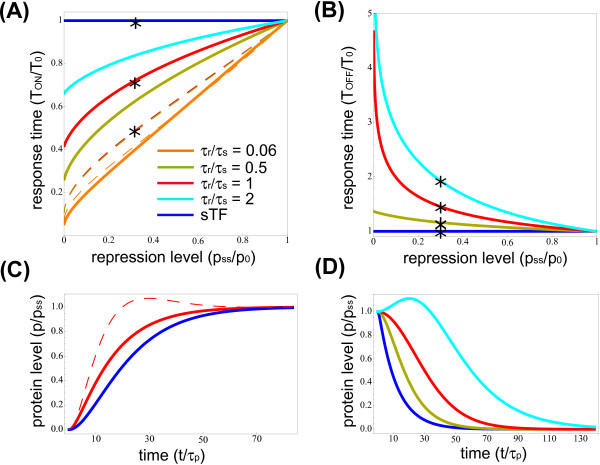Figure 2.
Autoregulation via intronic miRNAs speeds up the host gene activation and delays its deactivation.(A) Activation response time: response time TON, normalized by sTF response time T0, plotted as a function of repression level pss/p0(pss/p0 = 1 means no repression) for different values of mRNA/miRNA lifetimes. Both iMSL and tSL (continuous and dashed lines) accelerate the response time with respect to sTF (blue line). Colors correspond to values of mRNA and miRNA relative stability (τr/τs), achieved keeping mRNA and protein degradation rates (gr, gp) fixed while varying miRNA degradation rate (gs). The half-life ratio τr/τs affects also the tSL dynamics, but the dependence is weak (the corresponding curves tend to collapse). (B) Deactivation response times: response time TOFF, normalized by T0, is shown for different repression levels. The blue line corresponds to the sTF. The response time for iMSL is plotted for different miRNA half-lives (same color code of A). The iMSL induces a delayed host gene response in the same repression range that consents a TONreduction. (C) Example of target protein temporal evolution in activation for the three circuitries. The parameter values correspond to stars in plot A. Time is in protein half-life units. (D) Example of iMSL target protein dynamics in deactivation for different mRNA/miRNA half-lives (stars in plot B). The parameter setting for this panel is the following: protein half-life τp = 8 hours, mRNA half-life τr = 30 minutes, h = 1000, kr = 0.212819s−1, kp = 0.0048s−1.

